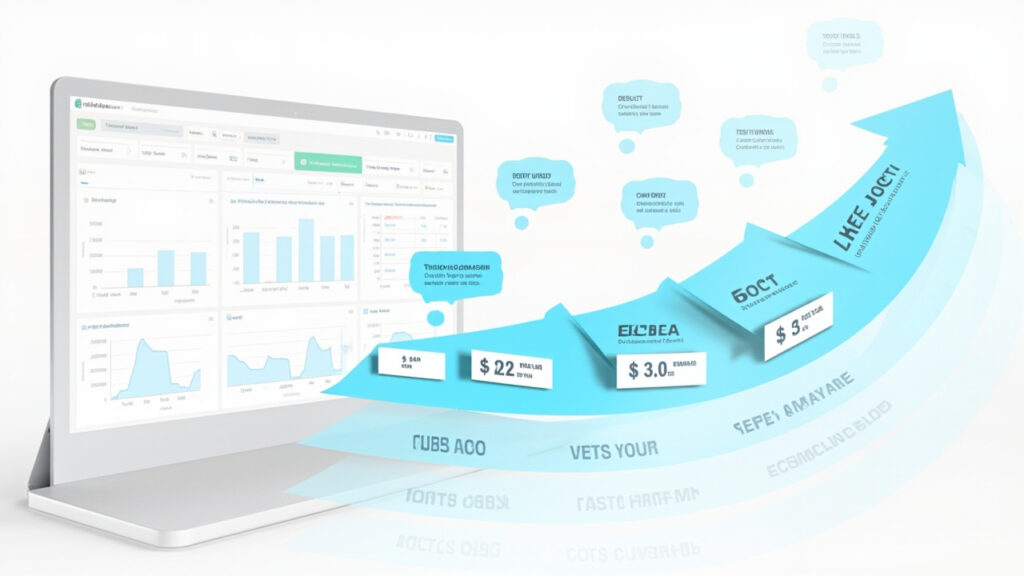In the realm of software development, the importance of efficient testing cannot be overstated. As businesses strive to stay competitive, the ability to launch flawless software rapidly and within budget becomes paramount. However, traditional testing methods often fall short, leading to delayed releases and spiraling costs. This article explores how modern testing strategies, particularly through the use of AI-driven platforms like GenQE, can significantly reduce expenses and improve product quality.
Understanding the financial impact of effective software testing is crucial for any organization looking to optimize its development lifecycle. We will delve into the challenges of conventional testing methods, the financial benefits of adopting advanced testing solutions, and how tools like GenQE are transforming the landscape of software quality engineering.
By the end of this read, you will gain insights into leveraging testing not just as a quality control measure, but as a strategic financial tool that can lead to substantial cost savings and enhanced market readiness.
The High Cost of Poor Quality Software

Poor quality software can be immensely expensive. From the direct costs associated with fixing bugs to the indirect expenses due to lost customers and tarnished reputations, the impact is profound and multifaceted.
Direct Financial Implications
The immediate costs of defective software include the resources spent on identifying, diagnosing, and rectifying defects. Studies show that the later a bug is found in the development lifecycle, the more costly it is to fix. For instance, fixing a bug in the post-release stage can be up to 100 times more expensive than addressing it during the design phase.
Indirect Costs and Long-term Effects
Beyond immediate fixes, poor software quality can lead to lost sales, compromised data security, and regulatory penalties. Moreover, it can erode customer trust, which is incredibly hard to regain. The indirect costs might also include increased customer support calls, additional training for users impacted by faulty software, and even legal costs if the failures lead to breaches of contract.
Case Study: Real-world Financial Impact
Consider a scenario where a financial application experiences downtime due to a critical bug. The immediate financial losses, coupled with customer dissatisfaction, can result in significant long-term financial and reputational damage. For example, a major bank faced a system outage that lasted several hours due to software failures, which not only resulted in direct operational losses but also sparked a massive withdrawal of deposits by panicked customers.
Embracing Advanced Testing Methods

Transitioning to more sophisticated testing methodologies can drastically reduce the costs associated with software defects. This section explores several modern testing strategies that have proven effective.
Shift-Left Testing
Integrating testing early in the development process ensures that defects are discovered and addressed sooner, which significantly reduces their impact and cost. The concept of “shift-left” involves moving critical testing tasks to earlier phases of the software development lifecycle, thereby catching bugs when they are less expensive and easier to fix.
Automation and Continuous Integration
Automating repetitive testing tasks and integrating them into the development pipeline helps catch bugs early and reduces the manpower needed for testing. Tools like Jenkins and Travis CI facilitate continuous integration by automatically running tests every time changes are made to the codebase, ensuring that the introduction of new changes doesn’t break existing functionality.
Leveraging AI for Enhanced Accuracy
Platforms like GenQE use AI to predict and identify potential problem areas in the software, thus preventing defects before they occur. GenQE analyzes historical data and user interactions to forecast problematic areas, enabling teams to focus their testing efforts more strategically.
Financial Benefits of AI-Driven Testing Platforms

Investing in AI-powered testing tools like GenQE can yield considerable financial returns. This section highlights the key financial advantages of incorporating such technologies.
Reduction in Manual Testing Costs
By automating routine test tasks, AI-driven platforms decrease the need for extensive manual testing, thereby lowering labor costs. For example, automated test scripts can run overnight without supervision, providing results ready for analysis the next morning.
Decreased Time to Market
Faster testing cycles translate to quicker time to market, which can be a crucial competitive advantage and revenue booster. By reducing the regression testing time from weeks to hours, companies can push updates and new features at a much faster rate.
Enhanced Software Quality
Higher quality software reduces the need for post-release patches and decreases the risk of costly failures. Reliable software also enhances user satisfaction, leading to higher retention rates and more positive reviews, which drive additional sales.
Example: Efficiency Gains from AI Integration
A tech company implemented GenQE and reduced its testing time by 40%, leading to earlier product launches and higher customer satisfaction. The AI-driven test generation and execution capabilities of GenQE allowed the company to cover more test scenarios with greater accuracy, catching defects that previously went unnoticed until post-release.
GenQE: AI-Powered Testing in Action

GenQE exemplifies how AI can streamline testing. Here’s how it addresses some of the common challenges in software testing.
AI-Driven Test Generation
GenQE automates test case creation, which not only speeds up the process but also ensures more comprehensive test coverage. This reduces the dependency on manual test case design, which can be both time-consuming and prone to human error.
Intelligent Prioritization
The platform prioritizes testing efforts based on risk analysis, focusing on the most critical areas first. This targeted approach ensures that high-risk changes are thoroughly vetted, reducing the likelihood of severe defects making it into production.
Self-Healing Capabilities
GenQE’s self-healing feature minimizes maintenance efforts by automatically adjusting test scripts when application changes occur, such as during UI updates. This reduces the typically high maintenance costs associated with test automation.
Case Study: GenQE in the Real World

Consider the example of a multinational corporation that implemented GenQE. The move resulted in a 50% reduction in testing costs and a 70% decrease in time to market for its software products.
Detailed Analysis of Cost Savings
This section would delve into specific financial metrics pre and post GenQE implementation, illustrating the direct and indirect cost savings. The company observed a significant reduction in the number of critical defects, which directly correlated with a decrease in customer complaints and support tickets.
Conclusion: The Strategic Value of Advanced Software Testing

Embracing advanced testing methods, especially AI-driven platforms like GenQE, is not merely about enhancing software quality; it’s a strategic financial decision. By reducing the incidence and impact of software defects, companies can save substantial amounts of money, accelerate their time to market, and improve their competitive standing.
Looking Ahead
As software complexities continue to grow, the role of sophisticated testing tools will become even more critical. Investing in these technologies now can set the foundation for future successes and financial stability.
For businesses aiming to optimize their software development processes and financial outcomes, exploring advanced testing solutions like GenQE is a step in the right direction. By doing so, they not only enhance their product quality but also fortify their financial outcomes in this digital age.
Discover More Innovative Solutions
Want to learn more about the tools and technologies discussed in this article? Explore how these innovations can be tailored to your specific needs and workflow requirements.
Our team of experts is available to answer your questions and provide personalized insights into how modern solutions like GenQE can address your specific challenges.